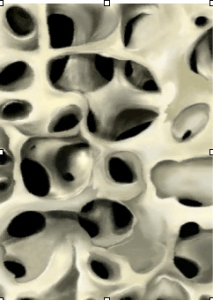
Osteoporosis is a disorder of skeletal insufficiency that is typically a result of increased bone breakdown relative to bone formation. With aging and in women the transition to menopause, the rate of bone loss accelerates. Over time, the thinning of the bone creates a more fragile skeleton that is susceptible to fracture.
Major Public Health Problem
As life expectancy is increasing, osteoporosis and resulting fractures that are costly to the individual and healthcare system are a major public health problem. Osteoporosis is the most common disease in white postmenopausal women. Men are not immune – up to 30% of the 2 million fractures in adults over age 50 each year in the US occur in men. Worldwide an estimated 9 million fractures occur each year due to osteoporosis.
Lower Your Risk
Decreasing your risk of osteoporosis is possible with building the strongest bones, adequate calcium and vitamin D, and healthy lifestyle measures. If you develop osteoporosis, breaking a bone is not inevitable. Although lifestyle measures, calcium, and vitamin D may not be enough to lower your risk. You should discuss with your doctor additional measures that include consideration of FDA-approved medicines, fall prevention, and lowering or removing contributing risk factors.
Diagnosis of Osteoporosis
Osteoporosis is diagnosed on the basis of occurrence of fractures or assessment of bone mineral density.
Fractures
If you sustain a fracture after the age of 50 from a fall or even from higher energy trauma, the broken bone is most likely due to low bone mass and should be regarded as osteoporosis. Even though hip, spine, and wrist are the most common fractures, other skeletal sites may also indicate osteoporosis. The exceptions are fractures of the skull and face, hands and feet, and kneecap.
Bone Density Criteria
According to the World Health Organization criteria using assessment by bone density scan, osteoporosis is defined as bone mineral density that is 2.5 standard deviations or more below the average value for young healthy women (or men). This corresponds to a “T-score” of -2.5 or lower at lumbar spine, femoral neck, total hip, or forearm to diagnose osteoporosis on basis of a DXA scan.

